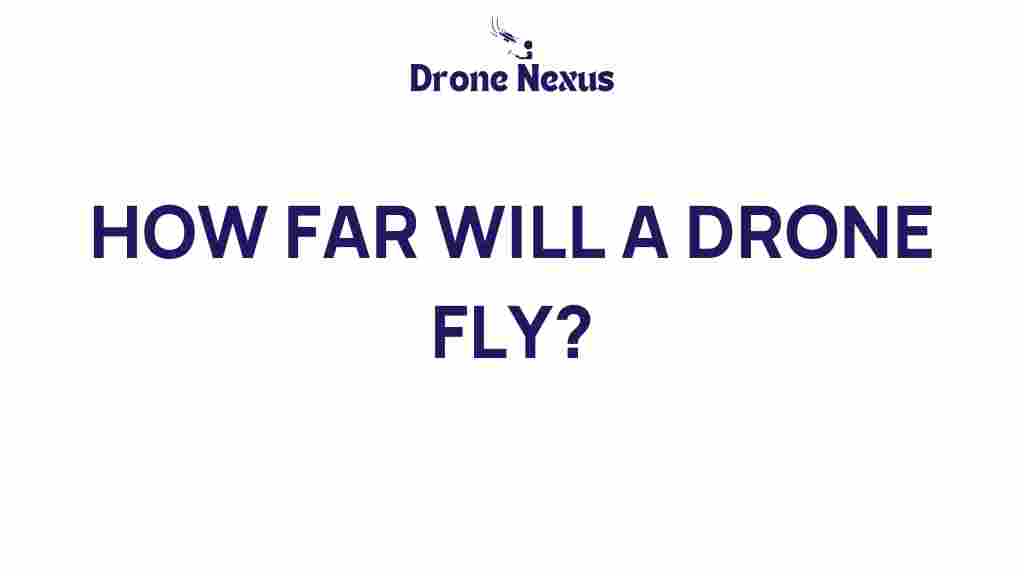Drones: How Far Can They Really Fly?
Drones have revolutionized various industries, from photography to agriculture, and many enthusiasts are keen to understand their limitations, especially when it comes to flight distance. In this article, we will explore how far drones can fly, the factors that influence their range, and what you can do to maximize your drone’s distance capabilities. Whether you’re a hobbyist or a professional, understanding these aspects can significantly enhance your drone experience.
The Basics of Drone Flight Distance
When discussing drone flight distance, it’s essential to first understand what determines how far a drone can fly. The flight distance of drones can vary significantly based on several factors, including:
- Battery Life: The capacity of the drone’s battery directly affects how long it can stay airborne.
- Signal Range: Drones operate through radio signals, and maintaining a strong connection is crucial for extended flight.
- Weight: Additional payloads can reduce flight efficiency and distance.
- Weather Conditions: Wind, rain, and temperature can all impact a drone’s performance.
- Type of Drone: Consumer drones generally have shorter ranges compared to professional-grade models.
Understanding Drone Specifications
To get a clearer picture of how far drones can fly, let’s break down some common specifications:
- Battery Capacity: Measured in milliamp hours (mAh), higher capacity batteries offer longer flight times.
- Effective Range: The distance from the controller to the drone, typically measured in kilometers (km).
- Flight Time: The duration a drone can remain airborne on a single charge, often ranging from 20 to 40 minutes for consumer drones.
Average Drone Flight Distances
While flight distances can vary, here are some average ranges for different types of drones:
- Consumer Drones: Most consumer drones can fly between 1 to 5 kilometers (0.6 to 3 miles) from the controller.
- Professional Drones: These can reach distances of 5 to 10 kilometers (3 to 6 miles) or more, depending on the model.
- Racing Drones: Designed for speed, these drones can typically fly up to 2 kilometers (1.2 miles), but they prioritize speed over distance.
Maximizing Your Drone’s Flight Distance
Now that you have an understanding of what affects a drone’s flight distance, here are some tips to help you maximize it:
- Choose the Right Location: Fly in open areas away from tall buildings and trees that can obstruct signals.
- Optimize Battery Life: Ensure your drone’s battery is fully charged and consider carrying spare batteries for longer flights.
- Maintain Line of Sight: Keeping the drone within your line of sight can help maintain the connection with the remote controller.
- Limit Payload: Avoid adding unnecessary weight to your drone to enhance its efficiency.
- Update Firmware: Regular updates can improve flight performance and connectivity.
Troubleshooting Common Issues
Even with the right preparations, you may encounter issues that affect your drone’s flight distance. Here are some common problems and their solutions:
- Weak Signal: If you notice a weak signal, try moving to a higher ground or repositioning the controller to improve connectivity.
- Short Flight Time: If your drone is not flying as long as expected, consider checking the battery health and replacing it if necessary.
- Interference: Electronic devices can interfere with the drone’s signal. Ensure you’re flying away from potential sources of interference.
- Weather Conditions: Avoid flying in adverse weather conditions like high winds or rain, which can affect your drone’s performance.
Popular Drones and Their Flight Ranges
To give you a better idea of what to expect, here’s a list of some popular drones along with their approximate flight ranges:
- Dji Mavic Air 2: Up to 10 km (6 miles)
- Parrot Anafi: Up to 4 km (2.5 miles)
- DJI Phantom 4 Pro: Up to 7 km (4.3 miles)
- Holy Stone HS720: Up to 1 km (0.6 miles)
- Racing Drones: Generally up to 2 km (1.2 miles)
Legal Considerations When Flying Drones
Before taking your drone out for a long-distance flight, it’s essential to consider the legal regulations surrounding drone use. These laws can vary by country and region, so always check local guidelines. Here are some common regulations:
- Registration: Many countries require drone registration for models above a certain weight.
- Altitude Limits: Most regulations restrict drones from flying above 400 feet.
- Restricted Areas: Avoid flying near airports, military bases, and other restricted areas.
- Visual Line of Sight: Many regions require drone operators to maintain visual contact with their drones at all times.
For more detailed legal information, you can visit the Federal Aviation Administration (FAA) website or your local regulatory body’s page.
Conclusion
Understanding how far drones can fly is essential for both hobbyists and professionals alike. With various factors influencing their range, knowing how to maximize your drone’s capabilities can provide you with a more fulfilling experience. Always keep in mind the importance of legal regulations and safety considerations when flying your drone. For more tips and insights on drone flying, feel free to check out our other articles here. Happy flying!
This article is in the category Technology and created by DroneNexus Team

1 thought on “How Far Can Drones Really Fly? The Surprising Truth Revealed”